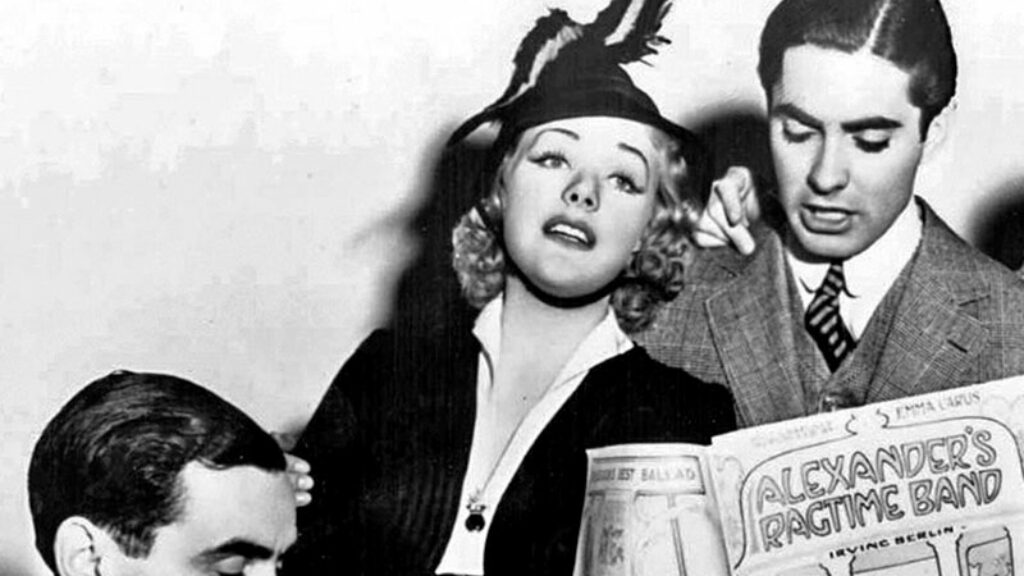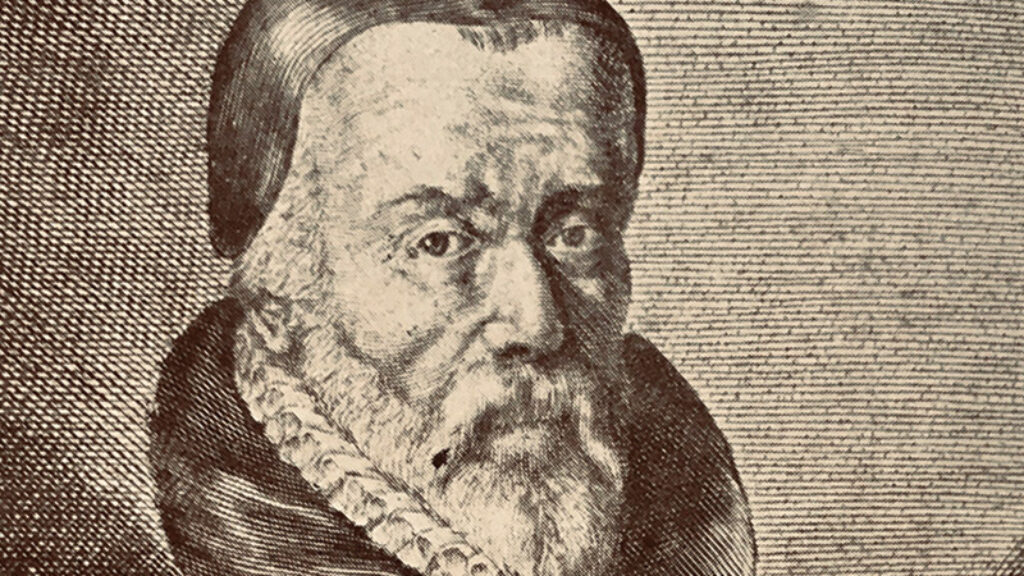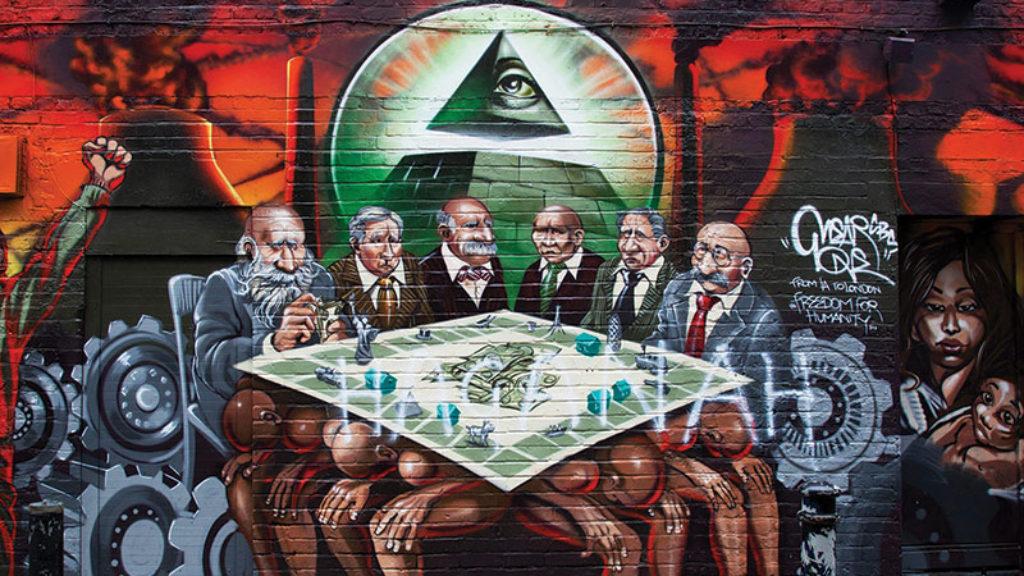Law, Lore, and Theory
Chaim Saiman’s lucid and learned new book offers a conceptual introduction to the halakhah, Jewish law. Its “core argument” is this:
Halakhah exists on a spectrum or continuum. At one pole, it functions . . . [as] a system of rules designed to govern human behavior. . . . But the book’s central concern is with the opposing pole, which is far more challenging to describe. Here, halakhah functions as Torah, as an object of Torah study, and even as literature. . . . In a sense, we can think of the two poles as establishing the goalposts, while the “game” of halakhah, and indeed its lived history, plays out on the field between them.
As opposed to the more mundane function of the first, regulatory pole, the second pole accords transcendent significance to the halakhah—indeed, makes it more than just Jewish law in the narrow sense. As Saiman explains:
the study of Torah . . . competes not only with other spiritual pursuits such as prayer and good works, and not only with other intellectual interests like studying philosophy, art, or science, but with virtually every other human activity—up to and including the basic human need of earning a living!

Saiman begins his discussion by analyzing the idea of halakhah as found in rabbinic literature. He contrasts the halakhic consciousness of the rabbis to the religious consciousness of the Bible, which focuses on a few central themes: worshipping one God, avoiding idolatry, honoring Shabbat, preserving sexual morality, and taking care of the less fortunate. For the rabbis, “living God’s will requires considerably more detailed knowledge of what the law mandates than a plain reading of the Bible lets on”:
The talmudic sages held that the laws of the Bible cannot be practiced until they are translated into more particular and detailed categories. . . . The rabbis held that the Torah is comprised of 613 individual mitzvot, each a foundational source of law. The Mishnah’s goal is to articulate the scope of the mitzvot along with rabbinic laws and enactments designed to expand and fortify them.
Thus, for example, the rabbis tried to define such general biblical injunctions as procreation or the prohibition of work on the Sabbath with “exacting precision. . . . Early halakhic texts establish the basic framework, while subsequent layers analyze, debate, and expand its details and applications.” To focus on Sabbath law: The rabbis in the Mishnah break down the general biblical prohibition of work into 39 distinct categories, one of which is writing, defined as writing two letters (the minimum number of letters necessary to form a word in Hebrew) using permanent liquid. Later rabbinic texts take all sorts of unusual cases into consideration, a process continuing down to today. As Saiman notes, “In the modern era, halakhists discussed whether it is permitted . . . to play Scrabble (generally okay, but in the Deluxe Edition, the board’s grooves hold the letters in place more permanently and may thereby produce a ‘writing’).”
Saiman points out that this “exclusive focus on the precise details of religious practice” left the Pharisees, the forebears of rabbinic Judaism, open to Jesus’s critique that they mistook “the legal trees for the spiritual forest.” Although he himself is thoroughly committed to rabbinic Judaism, Saiman does not casually dismiss Jesus’s critique. “A quick glance at the Mishnah,” he writes, “reveals that Jesus was not wholly off base”:
He chastises the Pharisees for fussing over questions like the tithing of herbs—and it is true, the Mishnah does not find these questions the least bit trivial. As Mishnah Ma’aserot (3:9) explains, if “savory, hyssop, and thyme” are deemed foods, they require tithing; if they are merely plants, they will be exempt.
Saiman notes that the traditional rabbinic response to Jesus’s critique is to argue that “law is not everything” in Judaism. This response contends that “Jesus and his latter followers failed to appreciate the different elements of the Jewish tradition that complement the law,” including the biblical narrative, aggadah (the nonlegal parts of rabbinic literature including allegory, stories both playful and didactic, and narrative theology), midrash, and the mystical tradition. While granting that this response possesses “much truth,” Saiman astutely notes that it “concedes the central claim: insofar as the subject is the corpus of halakhah, Jesus was correct.” Saiman takes the opposite tack:
Precisely because halakhah loomed so large in the rabbinic consciousness, it became the medium through which the rabbis did in fact engage the weightier matters of the law. This is true not only of halakhah—law in the narrowest sense of the term—but also the way the rabbis’ project merges halakhic dialogue with storytelling, biblical exegesis, and theological reflection.
Halakhah is not only regulation; it is Torah in the
broadest sense. That is to say, Torah is also storytelling, biblical exegesis,
theological reflection, moral instruction, education, and more. It is not, as
the
traditional response to Jesus’s critique would have it, a group of separate,
secondary religious disciplines, but arises out of the halakhic discussions
themselves.
The first two parts of Saiman’s book are devoted to a series of illuminating readings of rabbinic texts where we can see this integral connection between technical halakhic discussion and what has sometimes been called “meta-halakhic” thought. These parts contain such chapter titles as “Halakhah as Torah,” “Halakhah as Theology,” “Halakhah as Education,” and “Halakhah as Aggadah.” Given the fluid nature of the talmudic discussions, the distinctions between the materials treated in these chapters are often not very clear. The epigraph to the chapter “Halakhah as Aggadah” is a quote from Bialik’s classic essay about those two rabbinic categories of discourse, in which Bialik writes that a “living and vital halakhah is an aggadah that was or that will be. And the same is true in reverse.” One might say that Saiman aims to demonstrate the truth of Bialik’s poetic conceit in concrete rabbinic detail.
One fine example of this interplay between technical, even arcane, halakhic analysis and broad religious reflection can be found in the chapter “Halakhah as Torah.” Deuteronomy 21 mandatesthat if a murder victim is found outside a town and the killer is unknown, the elders of the nearest town must assemble in a dry riverbed, ceremonially hack a calf’s neck, and then wash their hands as a symbolic gesture of atonement. The Mishnah (Sota 9:4) raises a question about this practice that, as Saiman notes, seems like “a parody halakhic legalism”:
From which part of the corpse do they measure?
Rabbi Eliezer says: from his navel.
Rabbi Akiva says: from his nostrils.
That is, in the—to say the veryleast—unlikely event that the corpse was exactly equidistant between two towns, save for the trifling distance between the navel and the nose, from which of the two does one measure to determine which town is closer?
What is going on here? Saiman points to the explanation of this debate offered by the Babylonian Talmud (Sota 45b):
One master [Rabbi Akiva] holds:
the primary element of life is in his nostrils.
And one master [Rabbi Eliezer] holds:
the primary element of life is in his navel.
As Saiman eloquently explains, “[T]he issue is not how we measure a man’s corpse but how we measure the human essence.”
[The Talmud] turn[s] a superficially trifling legal question into a broadly philosophical one: Is man a primarily physical being—created from the navel on out? Or is man fundamentally a spiritual being—measured from the breathing passages?
And he points out, this “broadly philosophical” debate fits nicely into its halakhic context, “as the ceremony of the hacked calf is specifically designed to draw attention to the uniqueness of the human being.”
As Saiman notes, in Christianity such questions were addressed in theological discussions, and in our modern world they are addressed “in the humanities, the social sciences, biology, or neuropsychology. [But for] the rabbis the relevant context is halakhah.” This is very well said. He might have further underscored the point if he had examined the parallel passage in the Jerusalem Talmud (Sota 9:3), which he quotes, as more than a mere variant of the discussion in the Babylonian Talmud:
Rabbi Eliezer says:
from his navel—
from the place that the fetus is created.
Rabbi Akiva says:
from his nostrils—
the place where the face is recognized.
Following Saiman’s philosophical lead, we might construe the Jerusalem Talmud’s version of the debate as follows: What is it that is so morally abhorrent about the crime of murder? Is it that the murderer destroyed a human life—the biological life that develops out of the navel? Or is it that the murderer destroyed this unique human life—that is, this person who is uniquely identified by his face? As the Talmud states elsewhere, everyone’s face is different. In short, what we have here is an implicit disagreement between the Babylonian and Jerusalem Talmuds as to the philosophical significance of the seemingly trivial halakhic debate between Rabbi Eliezer and Rabbi Akiva.
As Saiman demonstrates again and again, halakhic discussion ranges far beyond narrow legal issues. Thus, he shows that a debate regarding a small detail of Sabbath law “initiates a discussion over the ideals of manhood; intellectual versus physical prowess; the relationship between poverty and politics; the possibilities of human perfection; and the true end of human history.” While Saiman writes that his book is aimed “at readers who might not know much about either Jewish law or the state of academic scholarship on the subject,” even accomplished talmudists who are familiar with the texts Saiman cites will benefit from his skillful organization of material and his incisive analyses.
Saiman’s discussion of halakhah in the post-talmudic period is a genuine tour de force. Here he uses his description of the two poles of halakhah as regulatory law and halakhah as Torah as an organizing framework to characterize much of this literature down to the present day. He notes that among the rishonim, the early medieval rabbinic scholars (10th–13th centuries), none quite maintained the balance found in the Talmud between applied and nonapplied halakhah, halakhah and aggadah, the dialectical give and take of discussion and firm legal conclusions, though some came closer to that balance than others.
Rabbi Isaac Alfasi of Fez and Lucena (1013–1103) stood at the first, regulatory pole. He was the author of the first great “summarizing commentary, Sefer ha-Halakhot . . . [which] skips over the aggadic portions of the Talmud . . . and deals only with the legal sections deemed then-currently applicable . . . offering a synopsis of [these sections’] central arguments.” At the other pole are the tosafists (literally, glossators), the 12th– and 13th-century Ashkenazic commentators on the Talmud.
While Rif [Alfasi] reduced the Talmud to legal rules, Tosafot performed “Talmud” to the Talmud. In the same way that the Talmud worked to resolve contradictions among its various sources of authority, Tosafot sought to reconcile contradictions among talmudic passages. . . . Rif focuses on . . . the practiced law in the present . . . while Tosafot’s interest spans the entire Talmud, practiced or otherwise. . . . Unlike Rif, Tosafot approaches the Talmud as a seamless web of rules and concepts to be explored through the varied dialectics of talmud Torah.
In contrast to Alfasi’s practical approach to the study of Torah, the tosafists adopted a devotional view. Tosafot, however, like Alfasi, “rarely addresses the Talmud’s aggadah, nor does the commentary discuss biblical narrative, spin aphorisms to encourage religious devotion, or contemplate theology or religious philosophy.” Thus, while the tosafists developed and expanded halakhic argument, so as to transform the Talmud—as one 16th-century authority colorfully put it—into a globe, it was a legalistic globe.
In his great code of law, the Mishneh Torah, Maimonides (1138–1204) sought to codify the entirety of halakhah, both practical and nonpractical, in this respect following the lead of the Talmud itself. But his aim was to produce a well-ordered code out of the literary riot of the Talmud:
Maimonides starts from Rif’s assumption that the Talmud needs to be pared down to legal rules, but then invents his own method for recording and classifying them. Whereas Rif excerpts Talmudic deliberations, Maimonides eliminates them entirely. Further, though Mishneh Torah issues thousands of declarative rules . . . it offers no halakhic defense of its conclusions. . . . The treatise [unlike Alfasi] also departs radically from the Talmud’s more haphazard organization . . . presenting halakhah in a conceptualized framework, marked by principles, corollaries, and exceptions.
Although Maimonides departs from the Talmud in both its organization and form of discourse, not only does he follow the Talmud’s lead in addressing the entirety of halakhah, both practical and nonpractical, but he also skillfully interweaves a great deal of what Saiman has referred to as “halakhah as Torah” together with his strictly halakhic presentation. Perhaps because in the Mishneh Torah such discussions are far more philosophical and less fanciful than those found in the Talmud, this point of contact between the Mishneh Torah and talmudic literature goes unnoted by Saiman.
Saiman uses the medieval halakhic continuum he has drawn between Alfalsi and Maimonides on the one hand and the Tosafot on the other to locate a wide variety of other key commentators and codifiers. Here, as elsewhere, his discussions are truly illuminating, but even a reader only cursorily acquainted with post-talmudic rabbinic literature might wonder at the lack of any discussion of Rashi’s commentary on the Talmud. This commentary is, along with Maimonides’s Mishneh Torah, universally acknowledged as one of the two most significant works of Jewish law written by a single individual. Saiman justifies this gap by his need to focus on the book’s primary task of showing how the concepts of halakhah as Torah and halakhah as regulation “played out at critical junctures in the development of halakhic thought.”
I would claim, however, that, to the contrary, Saiman’s framework deepens our appreciation of the significance of Rashi’s commentary. For if, as Saiman rightly claims, none of the monumental works of the rishonim that he surveys maintain the Talmud’s fine literary balance, Rashi’s commentary does just that. Like the Tosafot, and unlike Alfasi, Rashi covers not only the tractates dealing with applied practical law but also those dealing with laws that are no longer applicable, such as those of the Temple service. But unlike the Tosafot, Rashi’s unrivaled line-by-line commentary covers the totality of the text, skipping nothing and explaining whatever requires explanation, aggadah as well as halakhah. Finally, in contrast to Alfasi, who radically abridges the talmudic dialectic, Maimonides, who goes further and eliminates it entirely, and the tosafists, who radically expand the Talmud’s dialectic (performing “Talmud” on the Talmud), Rashi focuses on the sugya, the discussion at hand, guiding the student through the winding pathways of its give and take. It is thanks to Rashi’s commentary that the Talmud, despite historical ups and downs in popularity, remains the central text of halakhic study, always standing as a bulwark against the reduction of halakhah to regulatory law.
Perhaps the closest the Talmud ever came to being displaced in Jewish history was in the late Middle Ages when two principal halakhic codes, Rabbi Jacob ben Asher’s Arba’a Turim (Four Rows), known as the Tur, written in Spain in the 1300s, and Rabbi Joseph Karo’s Shulchan Arukh (Set Table), written in Safed in the 1500s and then supplemented by the glosses of his Polish contemporary Rabbi Moses Isserles, took center stage. These codes, Saiman observes, “offer the starkest contrast to the idea of halakhah-as-Torah. . . . For [their] express interest is to frame halakhah as black-letter directives that govern Jewish life of the exilic present.” Saiman, however, argues that the broader conception of halakhah had become so dominant that even legal codes like these never quite realized their purely regulatory goal. For example:
In several instances, a section of Tur begins by stating a broad rule derived from the Mishnah that sounds as if it will apply in many cases but is then significantly narrowed as the paragraphs proceed. In several laws relating to relationships between Jews and non-Jews, this proclivity is taken to an extreme. Not only is the scope of the halakhah cut back, but Tur concludes that in the present era the laws do not even apply.
What is striking and revealing, Saiman points out, is that the Tur accords the same importance to these now moot talmudic laws as it does to the regulatory rules concerning these matters currently in force. Precisely because these talmudic laws are still Torah, the obligation to study them leads the Tur to grant them a prominent place, and its commentators follow suit.
As Saiman shows, the same process is at work in the Shulchan Arukh and its commentaries. While the Shulchan Arukh itself, Saiman notes, is “considerably more code-like than the Tur,” and the primary interest of some of its commentaries is “applied halakhah in its most straightforward sense,” most commentators vacillate “between citing responsa addressing practical issues and extended elaboration of talmudic concepts.” Such theoretical commentary reached its apogee in the Ketzot ha-choshen, by the brilliant 18th-century talmudist Rabbi Aryeh Leib Heller. While formally a commentary on the Shulchan Arukh, it was, as Saiman notes, focused on “using legal rules to discuss foundational questions of halakhic jurisprudence.”
Note, however, what has happened in the course of Saiman’s survey of post-talmudic literature. His survey’s goal is to show that while halakhah in this period “began to journey away from the give-and-take of the Talmudic sugya toward codification and standardization . . . the idea of halakhah as Torah continues to present itself at critical junctures.” However, while in his readings of rabbinic texts in the earlier part of the book, “halakhah as Torah” referred to rabbinic storytelling, biblical exegesis, theological reflection, moral instruction, education, and the like, in his survey of post-talmudic literature, “halakhah as Torah” becomes research into “foundational questions of halakhic jurisprudence.” But jurisprudential theory and conceptual insights are not edifying stories, daring literary interpretations, or deep theological reflections.
In a chapter called “Halakhah’s Empire,” Saiman discusses the method of talmudic analysis whose leading practitioner was Rabbi Chaim Soloveitchik of Brest-Litovsk, or Brisk, who lived in the late 19th and early 20th centuries. In this method, Saiman notes, the idea of halakhah as a rigorous theoretical system “reaches its fullest articulation.” “Briskers” systematically probe all halakhic rules to reveal their conceptual, jurisprudential underpinnings. This method of study presupposes halakhah as a regulatory system but displays a singular lack of interest in it. As Saiman states:
The Briskers . . . adopted the Talmud’s practice of writing on non-practiced halakhah, melding various halakhic disciplines into a single framework and investigating long-rejected views alongside views codified in the Shulḥan Arukh . . . [saying] little about which view is correct. And while Briskers surely assumed their readers were fully committed to halakhic practice, the paradigmatic encounter with halakhah was as a medium of Torah study.
But the Briskers’ idea of halakhah as Torah is opposed not only to halakhah as a regulatory system but also to Saiman’s first idea of halakhah as Torah, the kind of broad, free-ranging, playful, poetic reflection found in the Talmud. The Brisker method is exceptionally formal and severely self-contained, rejecting any historical, contextual, or realist approach to the halakhah. Indeed this method views any attempt to psychologize or sociologize the halakhah as—to cite Rabbi Joseph Soloveitchik (1903–1993), the grandson of Rabbi Chaim Soloveitchik and one of 20th-century America’s most influential halakhists and theologians—“strangling its very soul.”
It is only in the last chapter of the book that Saiman notes that he has, in fact, been operating with two different concepts of “halakhah as Torah” and seeks to reconcile them. In this chapter, Saiman discusses the attempt on the part of some Religious Zionist jurists and halakhists to update the halakhah so as to enable it to “play a decisive role in the governance of the Jewish State.” But, Saiman queries, given the broad, even extralegal nature of halakhah as he has described it, can it “become, or merge with, modern state law?” Saiman reminds the reader of the moralizing language halakhah uses, the role it assigns rabbis as “teachers, scholars, spiritual guides, and theologians,” and the Talmud’s favoring of “legal argument, literary nuance, and cultural exploration over black-letter rules . . . [a] structure [that] can effectively foster moral development and impart religious meaning.”
How, for instance, could a state adopt the Mishnah’s two-tiered approach to an employer’s obligation to feed his employees? On the “hard” legal level, the master owes his worker no more than a basic meal, but on the “soft” educational level, the Mishnah urges employers to remember that workers deserve more than the minimum obligatory amount. Incorporating such an approach, Saiman argues, “would lead to uncertainty over what the law is.” But just sticking with the “hard” legal level “would decouple the halakhically inspired statute from the moral and spiritual teachings of the Mishnah.”
Do such moral and spiritual teachings have much to do with the Brisker method, which transforms “the Talmud’s oftentime fuzzy categories into hardened legal constructs”? Saiman began by describing the conceptions of “halakhah as regulatory system” and “halakhah as Torah” as the two opposing goalposts between which the game of halakhah and traditional Jewish life are played, but now there appear to be three goalposts: a regulatory one and opposed to it two others, a moralizing aggadic one and a rigorous theoretical one.
But, to return to the book’s beginning, while halakhah as Torah in the aggadic moral sense may respond to Jesus’s critique of the law as unspiritual, can the same be said of halakhah as Torah in its rigorous, abstract, theoretical sense? How can it be considered spiritual? Perhaps to extricate himself from these difficulties, late in the book Saiman suddenly affirms that “even the Brisker’s rigid categories can be shown to address a range of spiritual and social considerations both precluded and preluded by the method’s founders; of late, there has been a move to steer a renewed form of Brisker analysis farther in this direction.” In support of this contention, he refers the reader in a footnote to several recent studies. Indeed, there has been an ongoing effort over the past few decades by talmudic scholars from differing camps and ideological orientations to analyze talmudic and medieval halakhic texts using some form of Brisker legal categories, and then to move from and through these “hardened legal constructs” to values and “soft norms.” But Saiman never really discusses or engages in such an analysis. Indeed, his description of Brisk as a rigid self-contained method of legal analysis tends to undercut it. Nonetheless, Saiman’s conceptual overview of halakhah is illuminating, and his discussions of specific texts are not only uncommonly lucid but studded with insights. It is not too much to say that upon concluding the book, we realize that all along we have been engaged in fulfilling the commandment of talmud Torah.
Suggested Reading

Nothing but Blue Skies
Irving Berlin was generating Tin Pan Alley hits before Ronald Reagan was born and was still writing lyrics when the elderly Reagan occupied the White House.

From King James to Koren
The new Koren Tanakh smoothly addresses some thorny questions of biblical translation, including this one: Are there dolphins in the Torah?

Jews Not without Money
Jews, Money, Myth, at London's Jewish Museum, normalizes the Jewish relationship with money without negating those factors that made this particular historical association especially fraught.
Letters, Fall 2022
Day School and State; An Apocryphal Footnote; Confirmed as Drowned, and more
Comments
You must log in to comment Log In